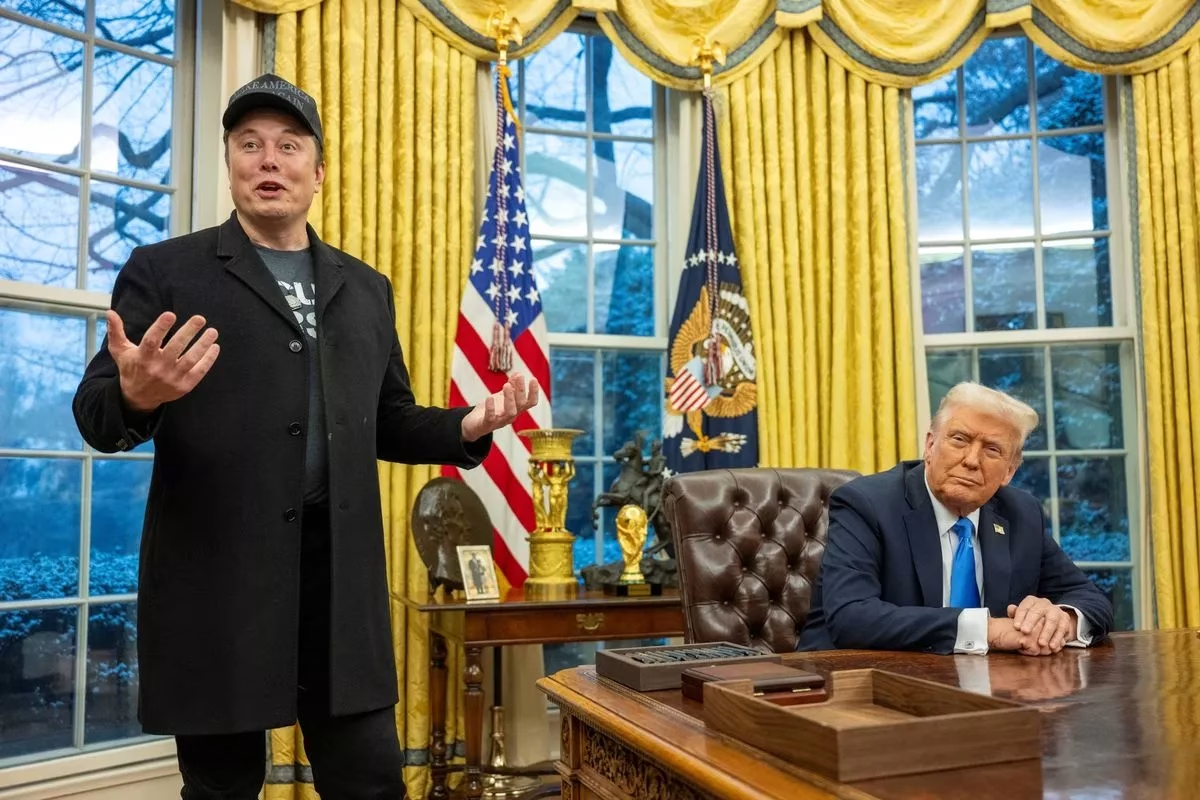By Mary Jones and Tony Bruce | Wednesday, October 25, 2024 | 6 min read
In the final months of his presidency, Donald Trump reignited attention to his hallmark campaign promise — building a robust wall along the U.S.-Mexico border. As he claimed progress on the wall, touting it as “almost finished,” many critics and supporters alike questioned the reality of his administration’s accomplishments. The narrative of the wall construction has been complicated, not only by the physical construction and logistical challenges but also by legal and political controversies, including the notable indictment of Steve Bannon over private fundraising for the wall. This article delves into the progress, promises, and controversies that define the Trump administration’s border wall project.
Donald Trump’s 2016 campaign was anchored by the promise of a substantial border wall spanning the U.S.-Mexico border, with his estimates ranging from 1,000 miles to 700 miles over time. The administration’s commitment to a “big, beautiful wall” aimed to address concerns about illegal immigration, drug trafficking, and national security.
By the time Trump left office in January 2021, the U.S. Customs and Border Protection (CBP) reported that approximately 438 miles of border barriers had been constructed. However, much of this construction involved replacing outdated or inadequate existing barriers rather than erecting entirely new structures. Of the total constructed, only 40 miles were newly built barriers in locations where none had previously existed. This starkly contrasted with Trump’s early visions, where he promised more comprehensive coverage, suggesting the final product was far short of his original ambitions.
A major point of contention in assessing the border wall’s progress involves the distinction between new and replacement fencing. Critics argue that the vast majority of Trump’s wall was simply an upgrade of previous structures. CBP replaced nearly 200 miles of vehicle barriers — easy for pedestrians to bypass — with 30-foot-high steel bollards fortified with lighting and surveillance technology. These changes, while significant, didn’t add substantial new mileage to areas previously unprotected.
Supporters of the administration’s strategy claim that even replacing old barriers counts as progress, noting that the revamped fencing significantly enhanced border security. In some cases, flimsy barriers made from decades-old materials were replaced with stronger, modern designs that were more difficult to breach. This replacement was particularly notable in regions like Arizona and New Mexico, where aging Vietnam-era structures were removed.
Geographically, the new construction occurred predominantly where federal land ownership minimized resistance. The federal government’s Roosevelt Easement, a 60-foot-wide strip along parts of the southern border, allowed for swift construction without the complications of private land acquisition. This led to extensive upgrades in Arizona, New Mexico, and California, where government-held land provided a smoother path for construction.
In contrast, the situation in Texas was markedly different. Large portions of the Texas-Mexico border are privately owned, leading to a host of legal challenges and delays. Landowners who resisted federal attempts to condemn their property tied up construction efforts in courts, creating significant gaps in the wall, particularly in high-traffic areas like the Rio Grande Valley. Consequently, much of the Texas segment remained unbuilt, contributing to the “patchwork” nature of the barrier that critics often cite.
The Indictment of Steve Bannon: A Fundraising Scandal
In an unexpected twist to the border wall saga, Steve Bannon, former Trump campaign strategist, became embroiled in a scandal linked to private fundraising for the wall. Bannon, along with others, was indicted in August 2020 on charges of fraud related to the “We Build the Wall” campaign. This crowdfunding effort, which raised over $25 million from private donors, promised to construct segments of the wall independently from federal efforts. The Department of Justice accused Bannon and his associates of misusing funds for personal expenses.

Trump distanced himself from Bannon’s campaign, emphasizing that the federal government had no involvement in the private initiative. Despite the charges, Bannon maintained his innocence, arguing that the funds were used appropriately. In a dramatic turn of events, Trump pardoned Bannon in his final hours as president, a move that added another layer of complexity to the border wall narrative.
Throughout his presidency, Trump’s definition of a “completed wall” evolved. His original call for a border-spanning barrier shifted as his administration faced funding battles and logistical hurdles. In speeches, Trump often cited natural barriers, such as mountains and rivers, as parts of the “wall” — reducing the number of miles requiring construction. Eventually, his focus settled on building between 700 and 900 miles, a target that still fell short of what some experts considered necessary for full border security.
In July 2020, the Department of Homeland Security’s Office of the Inspector General criticized the planning behind the border wall, highlighting the lack of a comprehensive strategy. The report noted that CBP failed to produce a detailed analysis to determine where wall construction would be most effective, relying instead on outdated assessments.
The construction of the border wall also raised environmental concerns. Activists and conservation groups criticized the wall’s impact on wildlife habitats, noting the disruption to migration paths for species like jaguars, ocelots, and gray wolves. Critics argue that the barrier severed critical ecosystems, particularly in Arizona and New Mexico, leading to potential long-term damage to the region’s biodiversity.
In addition, Native American groups protested construction efforts, especially where the wall encroached on sacred lands. The Tohono O’odham Nation, whose reservation straddles the U.S.-Mexico border, voiced opposition to the barrier’s construction on ancestral territory, arguing it violated tribal sovereignty and threatened cultural heritage sites.
Despite Trump’s repeated assertions that Mexico would pay for the wall, the entirety of the project’s funding came from American taxpayers. The administration secured around $15 billion for wall construction, a sum drawn from both congressional appropriations and funds reallocated from other programs, including military projects. By January 2021, projections indicated that only a portion of this funding would be utilized, as legal battles and a shift in presidential priorities threatened to halt ongoing construction.
As the Biden administration took over in 2021, it faced a new chapter in the border wall’s saga. Biden vowed to cease all new wall construction, stating that the funds should be redirected towards modern technological surveillance and other non-physical barriers. This decision raised questions about what would happen to the partially completed segments and whether Biden’s approach would sufficiently address border security concerns.
The Trump administration’s border wall stands as one of the most contentious and visible legacies of his presidency. It remains a symbol of his commitment to stringent immigration control, yet the project’s execution left much to be desired. While Trump claimed victory, citing hundreds of miles of construction, critics point to the gaps in the barrier, the environmental toll, and the failure to meet initial promises. The indictment of Steve Bannon over private fundraising efforts only added to the wall’s complex history, highlighting the challenges of navigating public and private initiatives for such a politically charged project.
As debates over border security continue, the wall’s legacy serves as a reminder of the intricate relationship between politics, policy, and practical outcomes on the ground.
Copyright 2024 FN, NewsRoom.





